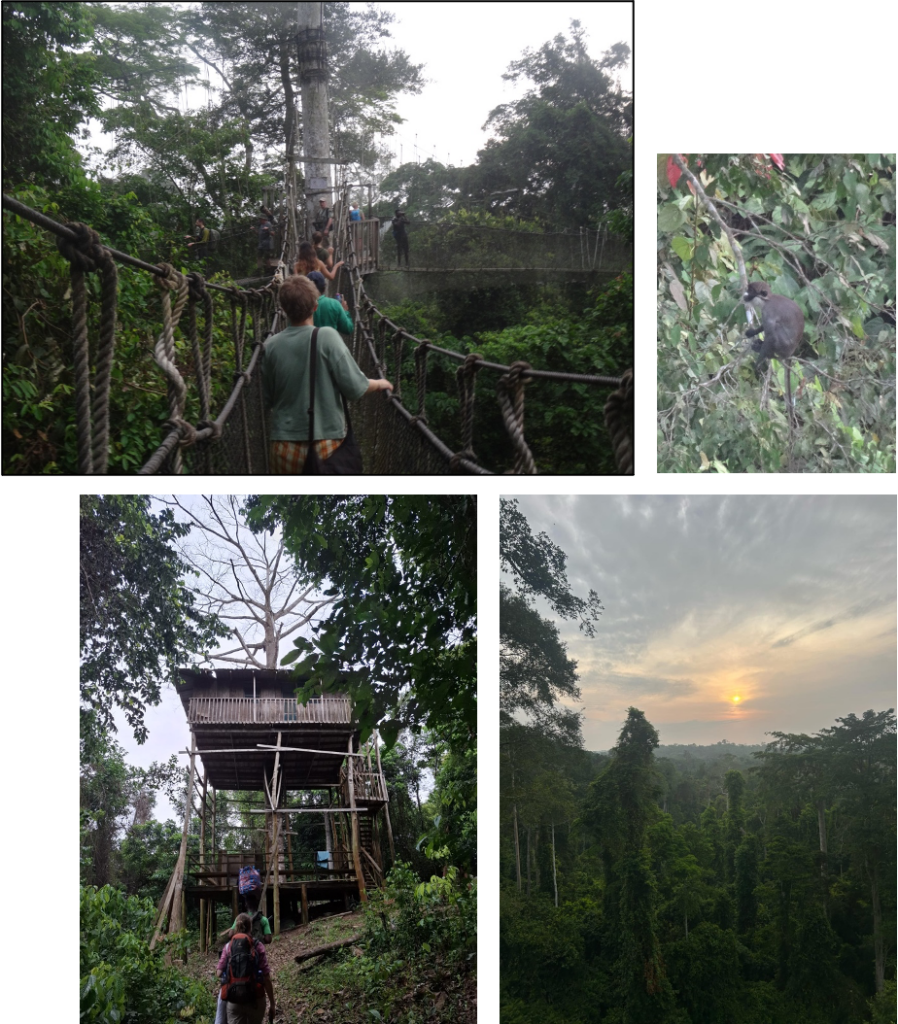Have you ever heard of Ghana month? Better known as the heritage month, March is filled with different activities and events. The most important one takes place on March 6th: Ghana’s Independence Day. For 68 years, Ghana has celebrated both its independence and the legacy of Kwame Nkrumah, the nation’s first prime minister and hero of the independence.
After a short week of school, our German group visited the traditional school marching in the morning of Independence Day. Students of all ages were participating. Students from each school marched in rows, with teachers leading at the front and following at the back of every group. A marching band was playing while chiefs and heads of ministries were sitting under big pavilions watching the marching procedure. The whole festivity was very impressive and we’re really grateful for being part of such an important national event.

The day after Independence Day was an official holiday, so we met our buddies for some games. The Ghanaian buddies are particularly fond of the game “Werwolf” (werewolf), which we have played many times since Friday.
Independence Day wasn’t the only exciting event this week. On Wednesday we joined the Seaben Cultural Immersion Tour hosted by the former fellows Ben and Samuel. For around an hour, we walked along the fish market and the harbor, passing fishing boats and visiting the European cemetery and various warehouses. Seaben’s mission is to provide cultural experiences which connect the past and the present. We learned a lot about Winneba’s cultural heritage and traditions


Wednesday was also Ash-Wednesday. At my internship school, a pastor prayed with the students and then marked ash crosses on the foreheads of the schoolgirls. I was surprised to see this religious practice, which has been very familiar to me since childhood.
Speaking of events, our group went on a big trip on Saturday. We met at the student’s center on UEW north campus at 6am – pretty early. First stop of our tour: Assin Manso Slave Market. We walked barefoot to the river from which the slaves were shipped to America. It was an oppressive feeling walking the same path the slaves had to take many decades ago. Descendants of the shipped slaves can request that the ashes of their family members be returned to this place, the last place they set foot on.
After the slave market, the bus took us to Cape Coast Castle. The slaves had to survive in small, dark dungeons, filled to the brim with people. Under the occupation of various European countries, they were sent to European colonies in North and South America. On a guided tour, we got to see different rooms of the castle and the male and female dungeons. The dungeons were dark and tiny, and sometimes they smelled damp and musty inside.

Our third and final stop after the castle was Kakum National Park. The park is definitely one of my highlights of our six-weeks-stay in Ghana. In the evening, we went on a guided tour through the rainforest, keeping an eye out for wild animals. We saw a centipede and a poisonous snake eating a lizard on top of one of the wooden beams of the reception building. That was scary and exciting at the same time and absolutely impressive. That night, we slept in a large treehouse, which was a unique experience. We heard so many different sounds, especially from the tree hyrax. I never imagined a forest could be so loud at night.
Early in the morning, we went on another tour that took us to the canopy walk. Large wooden bridges were stretched between the trees, allowing us to walk at treetop level and fully enjoy the sunrise. We also spotted monkeys hiding in the trees. I will never forget this experience, as the raw beauty of the national park proved how important it is to protect nature and its animals.
by Imke

